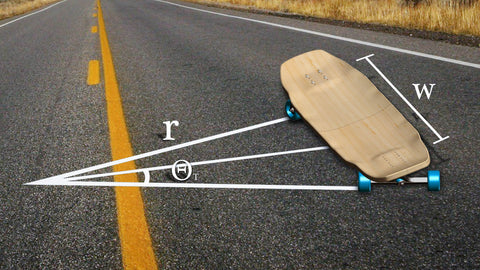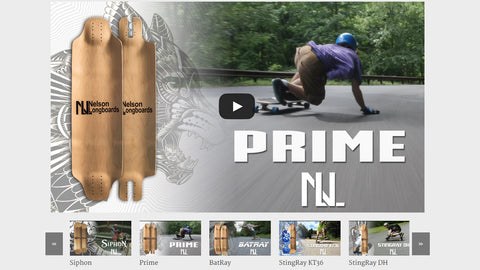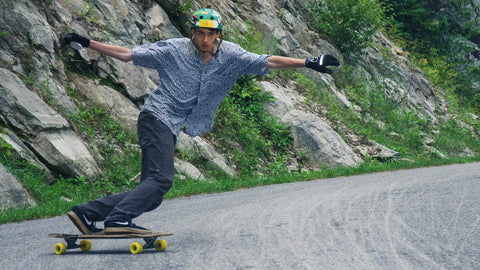Different Wheelbase Same Turning Radius? Dial in Your Next Setup With The Power of Math
November 25, 2015
44º Calibers on a 25" Wheelbase have the same exact turning characteristics as 50º Cals on a 30.5" Wheelbase. In this Article we'll show you how we figured that out and give you resources to dial in new setups without the guesswork.
We all know the basics of how truck angle and wheelbase affect our setups. If you want a more responsive ride use a shorter wheelbase or higher degree trucks, if you need stability a longer wheelbase or lower degree truck will do the trick. But beyond that it's all trial and error.
- Situation: You're eyeing up a new deck with a wheelbase that's shorter than your current board. You figure you'll grab some lower degree trucks to balance things out.
- Result 1: You Nailed it!
- Result 2: You went to low on the truck angle and now your setup feels dead :(
- Result 3: Twitchy madness #embraceshortwheelbasehype
After going through that a few times we decided to take the guesswork out.
Math
If you hate math skip to the next section where we get to the good stuff, we'll even give you a little link, (click if you hate math)

Still here? Cool, So in order to compare setups we need to be able to use the wheelbase and truck angle to calculate the boards turning radius (given certain amount of lean).



Now we can find the turning radius given then wheelbase, baseplate angle, and a certain amount of lean (hooray trigonometry!).
The Good Stuff
So now that we have our formula, we just need to know roughly how much the board leans during normal riding. We tested tons of setups around the shop by riding in circles to get dizzy and and measure their turning radiuses (radii?), then plugged the numbers into our formula to see how the board was leaning. With unreasonably loose trucks at unreasonably slow speeds we managed about 10º of lean while rolling so we'll use that as our maximum.
Turning Radius (ft) vs. Lean (º)
[[ chart.series[0] ]]
[[compareString]][[ chart.series[1] ]]
Wheel Base [[chartWb1]]in
Truck Angle: [[chartAngle1]]º
Wheel Base: [[chartWb2]]in
Truck Angle: [[chartAngle2]]º
Try playing with the sliders to compare two setups.
Looks like we got some interesting results!
Using the truck offsets that we measured in our previous article (4 Truck Specs That Manufacturers Don't Bother Telling You) we can use your true wheelbase to find the turning radius and compare between truck brands too! 
Find The Turning Radius of Your Setup!
Though changes in bushing hardness and ride height will affect how much force it takes to lean, this formula is 100% accurate for comparing the responsiveness of setups in terms of their lean/turn ratio.
These resources are extremely helpful when picking out new gear, It has already been a huge help to us here at Nelson when dialing in new setups. Hopefully you'll find it useful too.







Author Rich Nelson